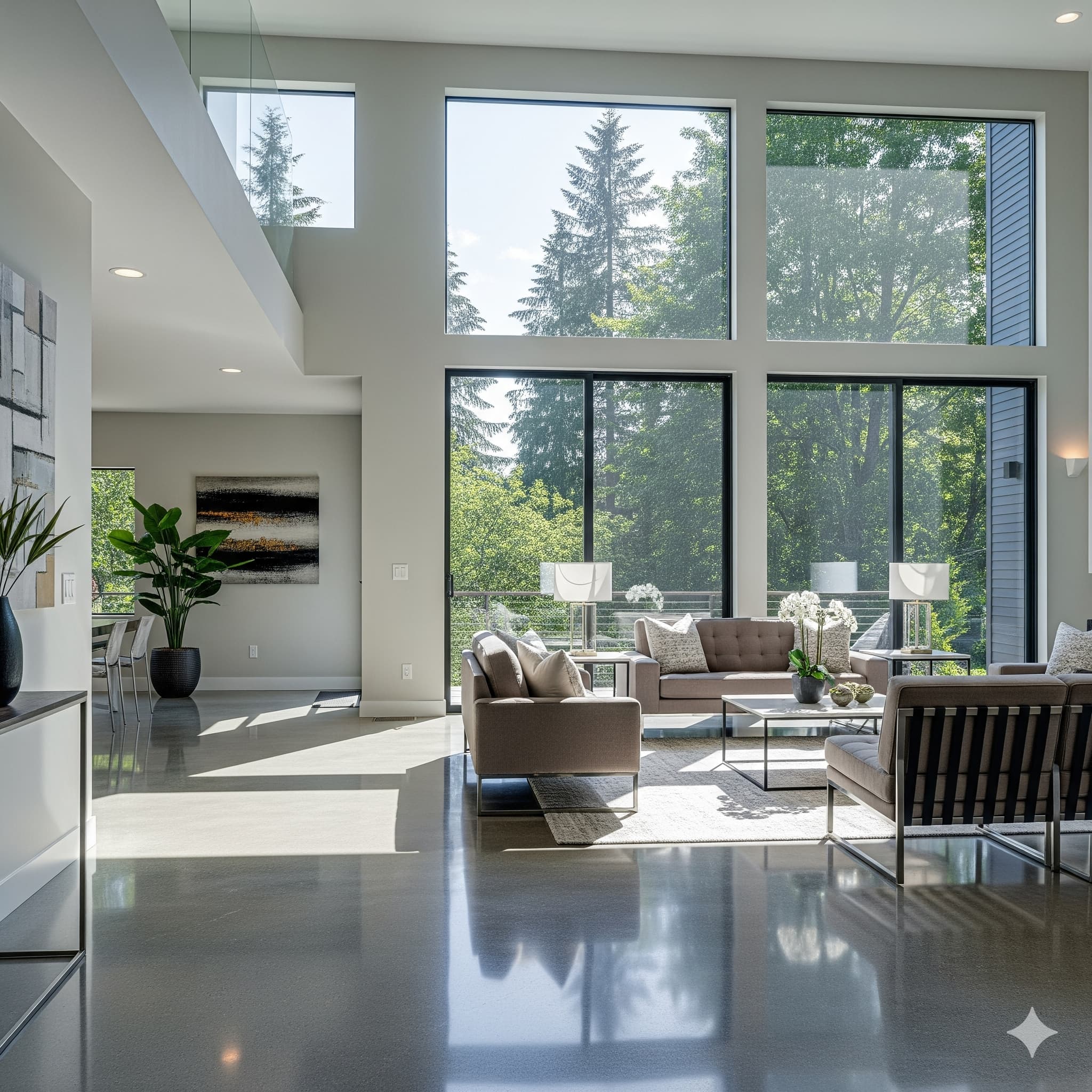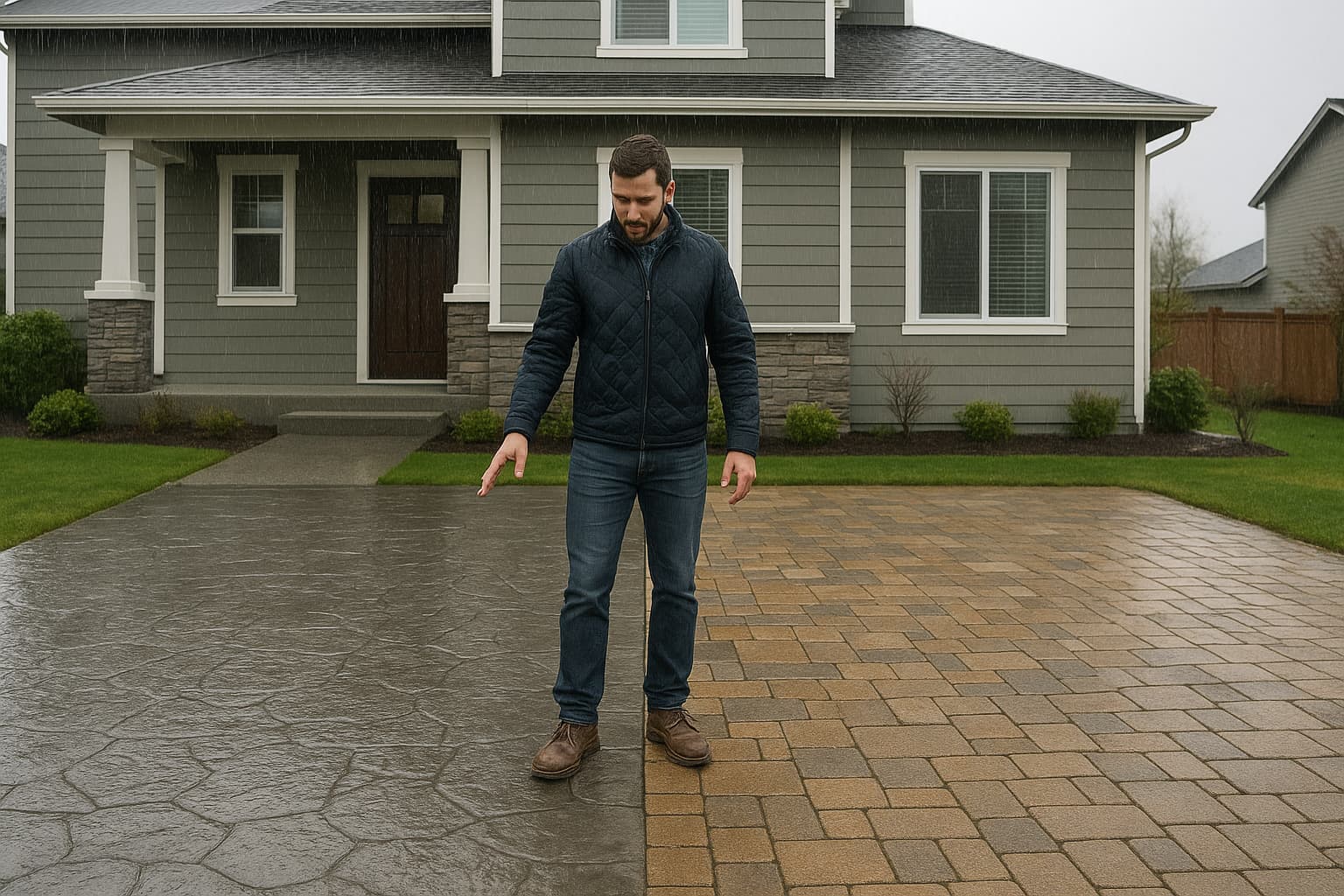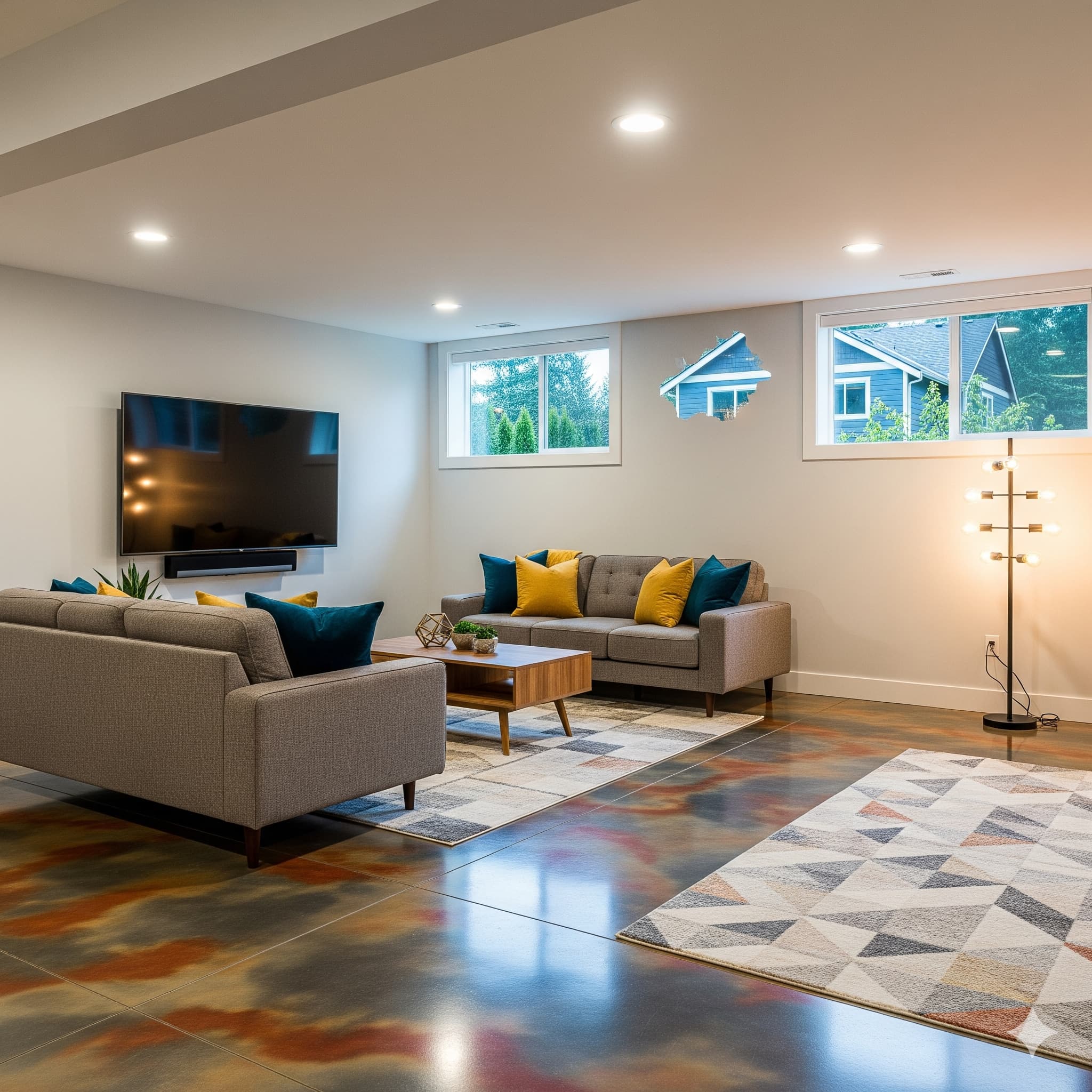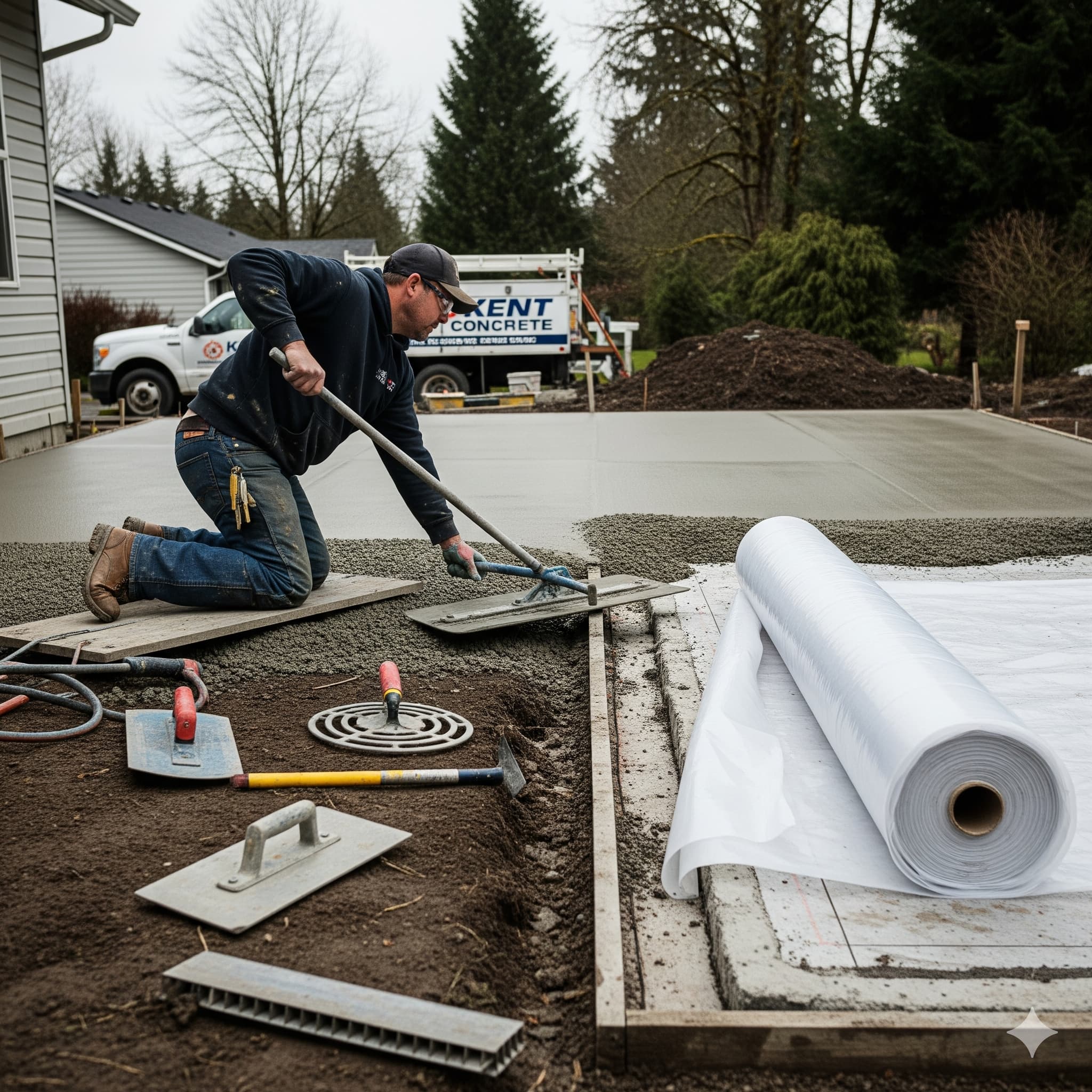
Top Causes of Concrete Damage in Kent & How Repairs Fix Them
Understanding the primary causes of concrete damage in Kent helps homeowners recognize problems early and implement appropriate repair strategies before minor issues become major expenses. The Pacific Northwest’s unique climate conditions, combined with local soil characteristics and environmental factors, create specific challenges that affect concrete performance throughout the region.
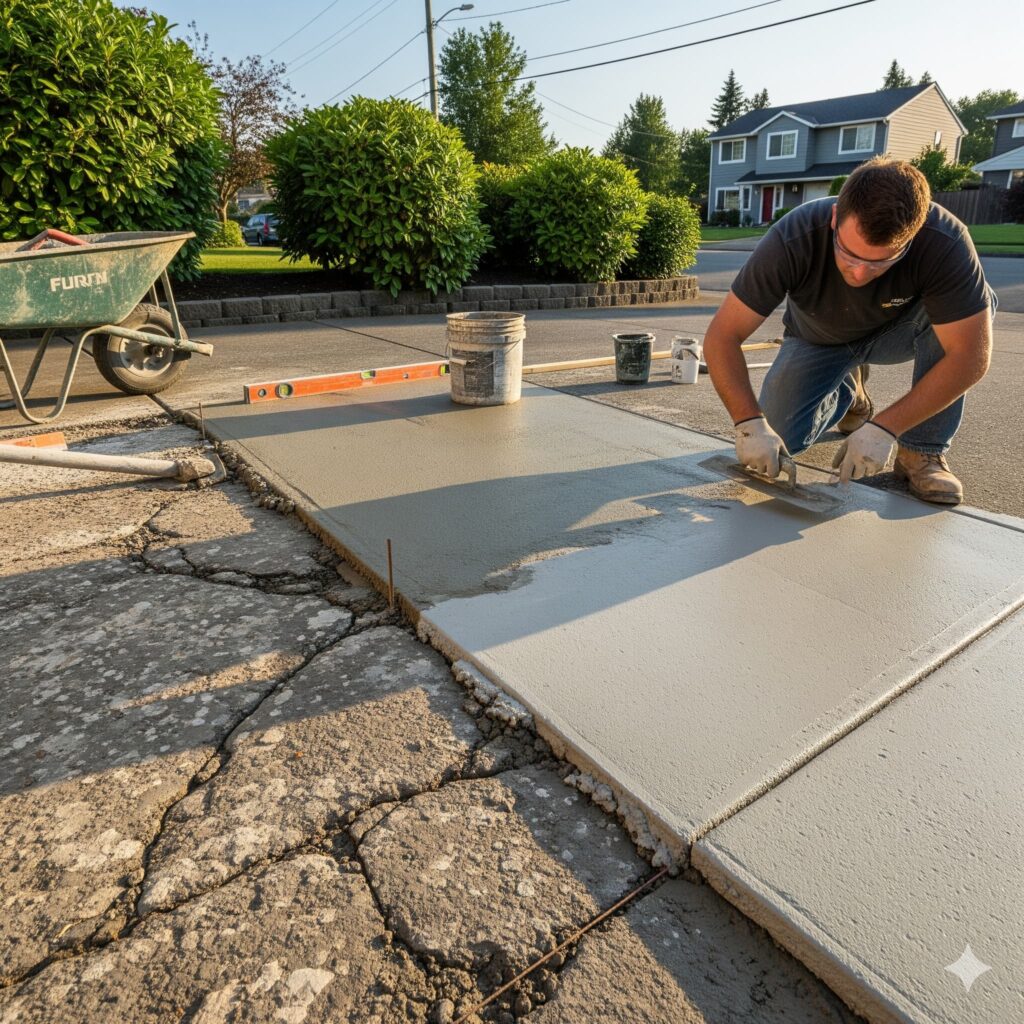
Freeze-Thaw Damage and Repair Solutions
Kent’s occasional winter freezing creates one of the most destructive forces affecting concrete surfaces. When water penetrates concrete pores or existing cracks and freezes, it expands approximately 9 percent, generating tremendous internal pressure that causes cracking, scaling, and spalling.
The damage typically appears as surface scaling where thin layers of concrete flake away, or as larger cracks that develop during repeated freeze-thaw cycles. Properties in elevated areas like East Hill or near open spaces around Boeing Field often experience more severe freeze-thaw damage due to increased exposure.
Professional concrete repair addresses freeze-thaw damage through comprehensive surface preparation followed by specialized repair materials designed for Pacific Northwest conditions. Contractors remove all damaged concrete down to sound material, then apply bonding agents and repair mortars that resist future freeze-thaw damage.
Prevention strategies include applying penetrating sealers that reduce water absorption while allowing moisture vapor transmission. Quality sealers create barriers against water penetration without trapping internal moisture that could cause additional problems during freeze cycles.
Soil Settlement and Foundation Issues
Kent’s clay-rich soils create ongoing challenges for concrete structures as these soils expand when wet and shrink during dry periods. This constant movement causes differential settlement that leads to cracking, tilting, and structural damage in driveways, patios, and foundation walls.
Settlement damage appears as stepped cracks, separation between adjacent concrete sections, or noticeable changes in surface elevation. Properties near former agricultural areas or wetlands often experience more pronounced settlement due to organic soil components that continue decomposing over time.
Concrete repair for settlement issues often involves underpinning techniques that stabilize the foundation while addressing surface damage. Professional contractors use methods like mudjacking or polyurethane injection to raise settled sections back to proper grade while filling voids beneath the concrete.
Comprehensive repairs include drainage improvements that manage water flow around concrete structures. Proper drainage prevents future soil saturation and reduces the moisture variations that cause ongoing settlement problems throughout Kent’s wet and dry seasons.
Water Damage and Moisture Problems
Persistent moisture exposure represents a significant threat to concrete longevity in Kent’s wet climate. Extended periods of water contact cause chemical reactions that weaken concrete while providing conditions for organic growth and surface deterioration.
Water damage manifests as surface discoloration, efflorescence deposits, spalling around joints, and accelerated deterioration of surface finishes. Areas with poor drainage, such as low-lying sections near Soos Creek or properties with inadequate grading, experience more severe moisture-related damage.
Moisture repair strategies begin with identifying and eliminating water sources through improved drainage, waterproofing, and surface modifications. Professional contractors assess drainage patterns and recommend solutions that address both immediate problems and long-term moisture management.
Repair procedures include removing damaged concrete, applying waterproof membranes or crystalline treatments, and rebuilding with moisture-resistant materials. Modern repair systems include vapor barriers and drainage provisions that prevent future water infiltration while maintaining structural integrity.
Chemical Damage from De-icing Salts
Road salt and de-icing chemicals commonly used during Kent’s winter weather create chemical reactions that deteriorate concrete surfaces over time. These chemicals penetrate concrete pores and react with internal components, causing scaling, pitting, and accelerated deterioration.
Chemical damage typically appears first along edges and joints where salt accumulation occurs most readily. Driveways near street intersections or areas where snow removal equipment operates often show more pronounced chemical damage due to increased salt exposure.
Effective concrete repair for chemical damage involves complete removal of contaminated material followed by application of chemical-resistant repair products. Professional contractors use specialized cleaners and neutralizing agents before applying protective coatings designed to resist future chemical exposure.
Prevention strategies include regular cleaning to remove salt residues, application of protective sealers, and using concrete-safe de-icing alternatives during winter maintenance. Quality protective treatments create barriers that prevent chemical penetration while maintaining surface traction.
Root Damage from Vegetation
Tree roots seeking moisture and nutrients can cause significant concrete damage as they grow beneath and around concrete structures. Kent’s lush vegetation and mature tree populations create ongoing challenges for driveways, sidewalks, and foundation walls throughout established neighborhoods.
Root damage appears as heaving, cracking, or displacement of concrete sections. Properties near areas with large trees, such as neighborhoods around Kent Commons or mature residential areas, often experience root-related concrete problems as trees continue growing.
Root damage repairs require addressing both the damaged concrete and the underlying root system. Professional contractors coordinate with certified arborists to manage root systems while implementing concrete repairs that accommodate continued tree growth.
Modern repair techniques include root barriers, flexible joint systems, and strategic concrete placement that reduces future root conflicts. These approaches preserve valuable trees while protecting concrete investments through thoughtful design and installation practices.
Traffic and Load Damage
Excessive loading from vehicles, equipment, or concentrated weight can cause concrete cracking, surface wear, and structural failure. Kent’s residential areas often experience damage from delivery trucks, construction equipment, or recreational vehicles that exceed the original design loads.
Load damage manifests as linear cracks following wheel paths, surface spalling in high-traffic areas, or structural cracking where excessive weight is concentrated on small areas. Commercial vehicles accessing residential properties often create damage patterns that require professional assessment and repair.
Load damage repairs begin with a structural evaluation to determine underlying causes and appropriate repair strategies. Professional contractors assess whether damage results from inadequate original construction, changed usage patterns, or excessive loading conditions.
Repair procedures may include complete reconstruction with increased thickness, reinforcement additions, or load distribution improvements. Modern techniques allow strengthening existing concrete while addressing current damage and preventing future problems under anticipated loading conditions.
Age-Related Deterioration
Normal aging processes cause gradual concrete deterioration even under ideal conditions. Kent’s older neighborhoods include many concrete installations approaching or exceeding their expected service lives, requiring evaluation for repair or replacement decisions.
Age-related damage includes surface wear, minor cracking, joint deterioration, and gradual strength loss. Properties built during Kent’s rapid growth periods may show accelerated aging due to construction practices or material quality variations from those eras.
Age-related concrete repair focuses on extending service life through targeted interventions rather than comprehensive replacement. Professional evaluation determines which areas benefit from repair versus those requiring complete reconstruction.
Effective aging repairs include surface restoration, joint rehabilitation, and protective treatments that slow further deterioration. Strategic repair timing and techniques can extend concrete service life by 10 to 15 years while maintaining functionality and appearance.
Professional Repair Advantages
Kent Concrete Masters provides a comprehensive damage assessment that identifies all contributing factors rather than addressing only visible symptoms. This thorough approach ensures repair strategies address root causes while preventing future problems.
Professional repairs include appropriate material selection for Kent’s specific climate conditions and performance requirements. Experienced contractors understand which products and techniques provide optimal results in Pacific Northwest conditions.
Quality control during repair procedures ensures proper surface preparation, material application, and curing practices that determine long-term repair success. Professional oversight prevents common mistakes that compromise repair effectiveness and longevity.
Cost-Effective Repair Timing
Early intervention typically costs significantly less than waiting until damage becomes severe. Regular monitoring and prompt repairs prevent minor issues from escalating into major reconstruction projects that affect property value and functionality.
Seasonal timing affects repair complexity and success rates. Planning repairs during Kent’s dry summer months ensures optimal conditions while avoiding complications from wet weather that can compromise repair procedures and curing.
Coordinating multiple repairs during single projects often provides cost savings through reduced mobilization and setup expenses. Professional contractors can efficiently address several damage areas while minimizing disruption and maximizing value.
Understanding these common damage causes and effective repair solutions helps Kent homeowners protect their concrete investments while maintaining safe, attractive, and functional outdoor spaces. Professional assessment and quality repairs ensure optimal results that provide decades of continued service despite challenging Pacific Northwest conditions.

